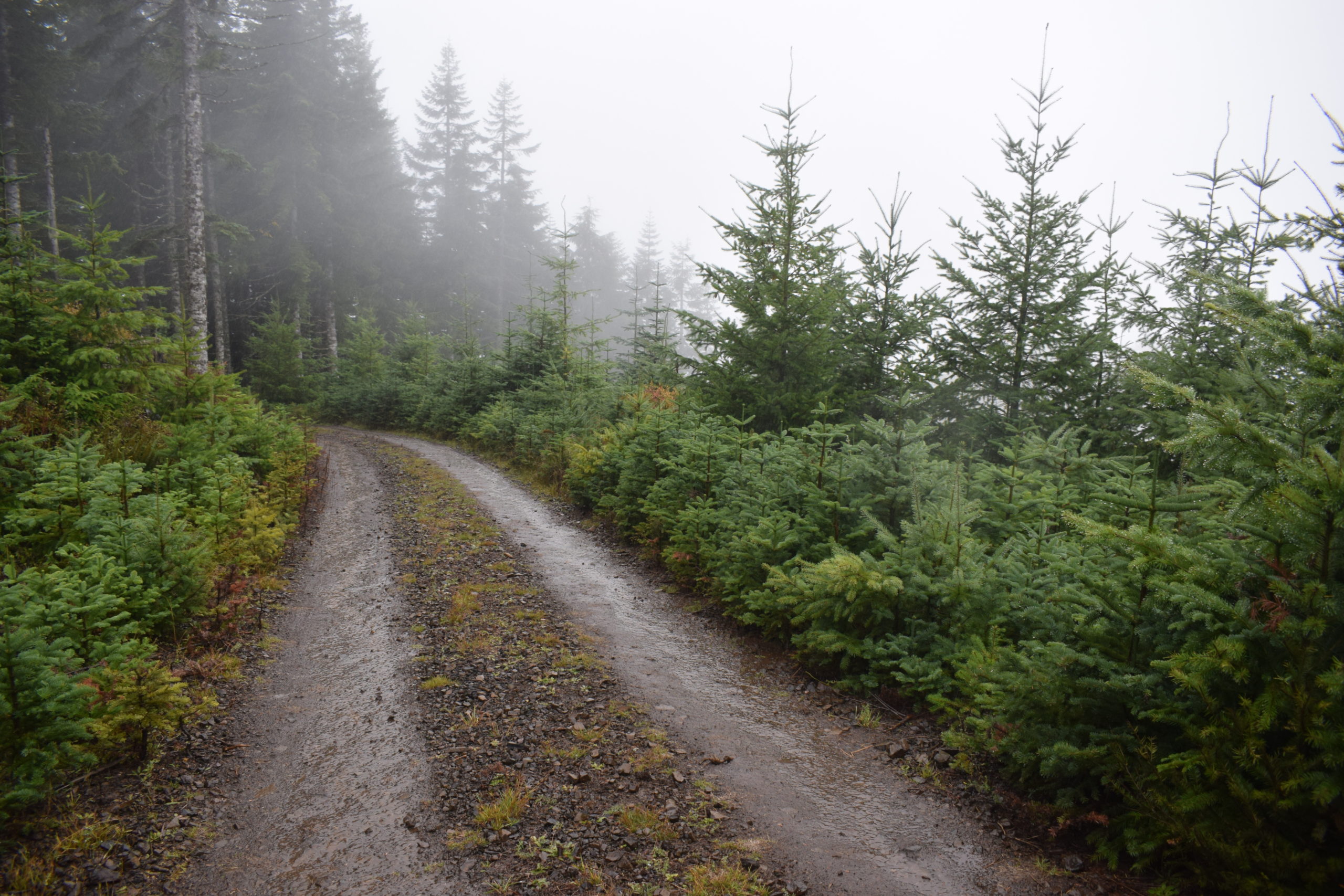This time of year cut fir trees find their way into our plazas, businesses, parking lots, and homes. Here in Oregon, such trees are inevitably locally grown—we’re the nation’s top Christmas tree producer. The graceful symmetry of the noble fir tree make it a favorite during the holidays but this iconic tree is also an important source of timber for the north coast.
Hampton Lumber manages roughly 60,000 acres of forestland in Tillamook, Lincoln, Polk, Washington, and Yamhill counties to help supply our sawmills, including the one in Tillamook. Much of this forestland lies at 1,800-3,700 feet of elevation in the coast range where as much as 120 inches of rain falls each year. Reforestation forester, Dale Claassen manages these lands. It’s wet work. Good rain gear is key. This time of year, much of the forestland he manages is closed due to snow.
I recently took a ride out on these high elevation forests with Dale to learn more about his work. With spectacular vistas around every corner, it’s easy to appreciate the immense abundance of coastal forests. Conditions in the coast range can change quickly. Weather apps with reliable radar are among Dale’s most precious tools.
Bumping along an intricate network of gravel logging roads in a heavy rain, Dale proudly points out a new culvert, a recently planted stand of trees, and a trusted logging crew that’s finishing up a challenging harvest.
It can be easy to lose one’s bearings in these forests but Dale knows these lands like the back of his hand and navigates his Ford truck with fearless precision. “As a forester, you get good at backing up,” he says with a sly smile as I clutch my seatbelt and he repositions the truck to make a hair pin turn along the face of a mountain.
Dale holds a degree in Forest Management from Oregon State University. He’s an expert in growing native trees and all that comes along with it, including pest and vegetation management. He organizes the planting of nearly one million seedlings each year. Mixtures of Douglas fir, western hemlock, western red cedar, and noble fir are planted by hand based on the elevation and soil conditions. At the higher elevations, noble fir is abundant. They thrive in the rocky soil and sturdy branches help them withstand the wind and snow that occurs in higher elevation coastal areas.
While planting helps speed up the restoration process, natural repopulation is common in the coast range. Like Douglas fir, noble fir thrive in open areas where full sun is available and they regenerate quickly and abundantly after a major disturbance such as a fire, landslide, or timber harvest. On this rainy day, we visited an area harvested just a few years prior and the natural renewal was already underway. Dense bands of volunteer noble fir saplings line the roadside.
Hampton processes noble fir at our sawmills in Tillamook and Warrenton. While perhaps not as popular as the iconic Douglas fir, it produces strong, durable lumber that you’re likely to see marketed as “whitewood” at your home building centers and lumber yards.
So the next time you find yourself admiring the holiday tree in your town square, make sure to also take a moment to look to the hills and appreciate all the unadorned trees that surround us every day. Foresters like Dale are likely out among them, tending these forestlands year after year to help provide renewable building materials for communities near and far.
TWLWC is made up of individuals that make a living through farming, fishing, aquaculture, and forestry. Our mission is to increase awareness of working forests, farms, and fisheries and the importance of providing sustainable, locally grown and harvested products.
Kristin Rasmussen
Hampton Lumber

Comments are closed